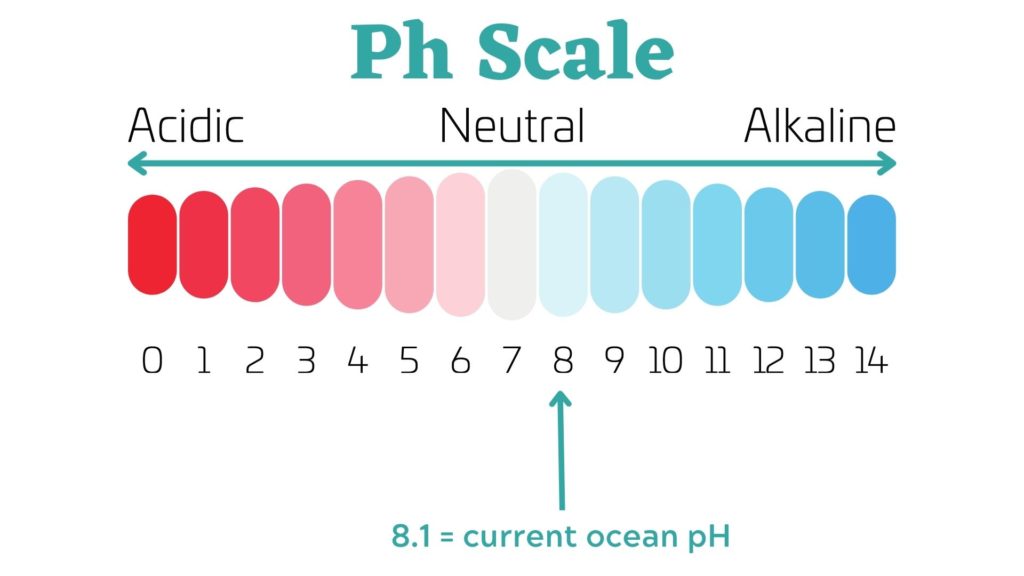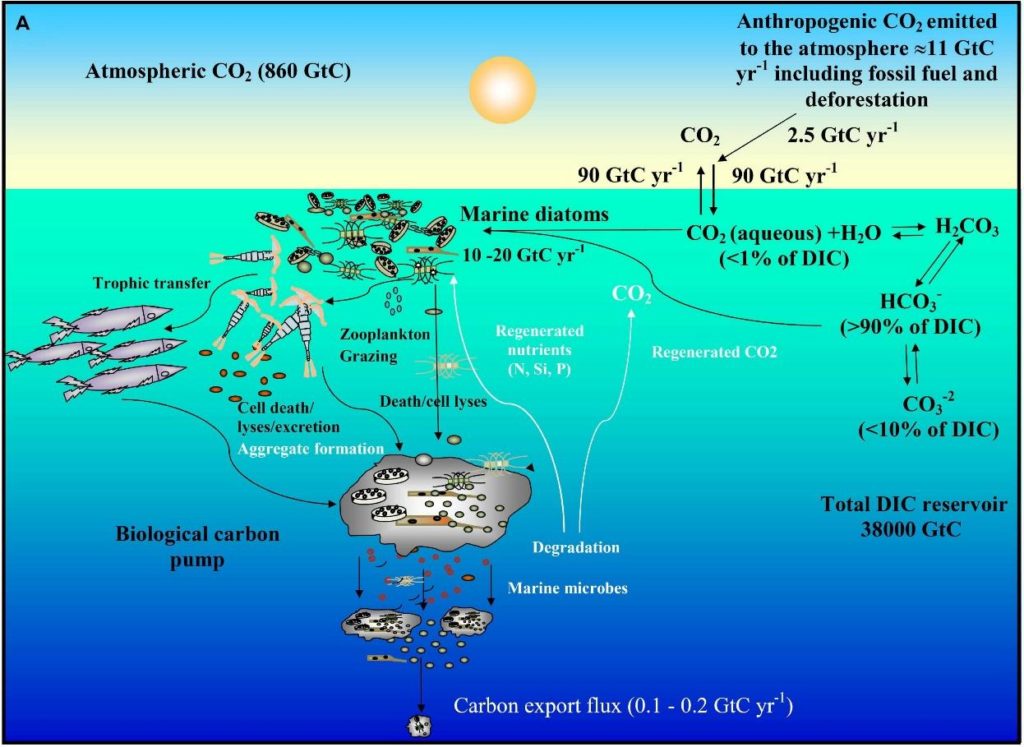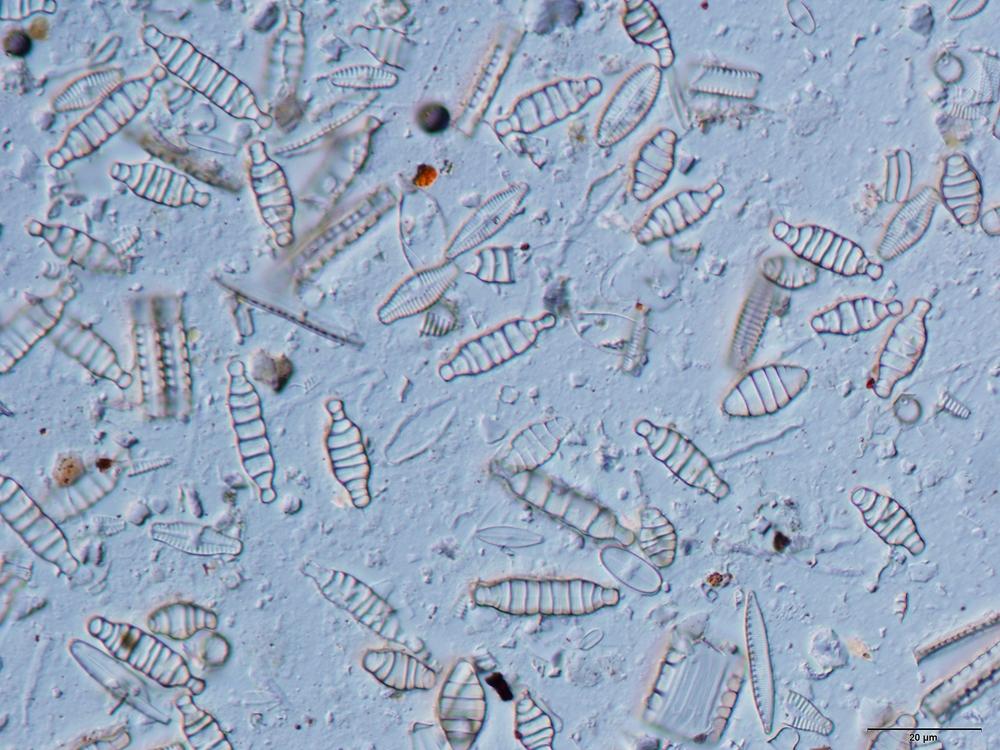Ocean acidification occurs when the pH level of seawater decreases, which is most frequently caused by the ocean absorbing excess CO2 from the atmosphere. Ocean acidification has negative effects on a variety of ocean ecosystems and life forms, including diatoms, a type of phytoplankton characterized by glass-like cell walls made of silica.
This article will explain how diatoms are affected by ocean acidification, and will discuss the importance of diatoms to ecosystems and people.
Background information: Ocean Acidification Infographic
Table of Contents
How Are Diatoms Affected by Ocean Acidification?
The Importance of Diatoms to the Ecosystem
The Importance of Diatoms to People
What Are Diatoms?
Diatoms are one of the two common types of phytoplankton. They are found in bodies of water such as the ocean, rivers, lakes, and ponds, as well as in mud and moist soils. Diatoms are commonly recognized by their transparent glass-like cell walls made out of silica acids (a type of mineral) that are dissolved in water. Just like corals and other marine plants, diatoms photosynthesize in order to survive, which is why sunlight and carbon are essential to their survival. Diatoms also play a vital role in transferring atmospheric carbon to the deep ocean, which helps to prevent global warming and reduce ocean acidification.
To give you a better grasp, here is a short video explanation and microscopic footage of diatoms by MicroBiome:
How Are Diatoms Affected by Ocean Acidification?
Despite their small size, diatoms play an important role in ocean ecosystems and studies are revealing the risk ocean acidification poses to their wellbeing. Diatoms rely primarily on CO2 for their photosynthesis, so the ocean’s increased absorption of CO2 that causes ocean acidification has a large impact on the creatures. Here are some of the effects of ocean acidification on diatoms.
Ocean Acidification Could Increase the Growth of Diatoms
According to a 2019 study, high CO2 levels due to ocean acidification could increase the metabolism and growth of diatoms. This is because diatoms rely on CO2 as their source of energy in photosynthesis. However, the study’s results are still being debated and there is no final agreement on how these factors would affect the diatom community, nor how diatoms will continue to adapt to the acidifying ocean.
Ocean Acidification Slows the Development of Silica Cell Walls

Diatoms build their silica cell walls to protect themselves against predators such as krill. The cell wall is an important factor for their survival. According to a 2019 study published in Nature, exposure of diatoms to ocean acidification could slow their development of silica cell walls. The study reveals that even when the ocean pH level drops to 7.84 (compared to today’s pH of 8.1), the development of diatom’s silica cell walls reduces. Not only can this affect the ability of diatoms to survive, but it can create an imbalance in the ocean’s silica levels. Even small shifts in ocean acidity can have major impacts.
Ocean acidification may also impact the ability of diatoms to dissolve their shells, leading them to sink into the deep ocean. This reduces their population by making it difficult for them to get light from the surface, reducing their ability to photosynthesize to survive.
Read more: New Research Shows Unexpected Negative Impacts of Ocean Acidification on Diatoms
Ocean Acidification Could Alter the Efficiency of Diatoms’ Transport OF CO2 to the Deep Ocean
Diatoms play a big role in carbon sequestration. When they die, diatoms sink to the deep ocean with the help of their silica cell walls that serve as a weight and stabilizer. This process works to transport all the CO2 the diatoms have absorbed to the ocean’s depths, thus sequestering it in the deep ocean and removing it from the atmosphere. However, the same 2019 Nature study discussed above implies that due to the slow development of silica cell walls induced by exposure to ocean acidification, the ability of diatoms to transport CO2 to the ocean’s depths might be negatively affected. Without the carbon sequestration services of diatoms, global warming could accelerate and may cause larger ecological problems, including worsening ocean acidification.
The Importance of Diatoms
Despite their microscopic size, diatoms play a massive global role in making marine and terrestrial ecosystems habitable for both people and wildlife. However, the threat of ocean acidification may put diatoms under new stressors that might affect the services they provide. Here are some of the ways diatoms are important to ecosystems and people.
The Importance of Diatoms to the Ecosystem
Primary Food Provider
Diatoms are at the bottom of the food chain. They serve as food to larger organisms like zooplankton, krill, algae eater fishes, snails, and more. These larger organisms flourish because of the abundance of diatoms. Even larger marine animals depend on the organisms that rely on diatoms. For example, the whale’s primary diet is krill. Without diatoms, krill would not be able to survive. If there are not enough krill to sustain the whales, it could cause starvation and ultimately decline in whale populations.
This hypothetical breakdown of the food chain shows the importance of diatoms as the primary food source in the food chain. Any damages to diatoms caused by catastrophic events such as ocean acidification would have a significant impact on all species who rely on their services, from the smallest krill to the largest mammal on the planet.
Read more: How Are Whales Affected by Ocean Acidification?
Natural Carbon Sink
Diatoms are considered a natural carbon sink, as they absorb up to 20 billion tons of atmospheric carbon annually. Diatoms convert atmospheric carbon into organic carbon as they absorb it through photosynthesis. When they die, they carry the stored carbon down as they sink to the ocean floor. This carbon-absorbing ability has a significant impact on mitigating global warming and climate change.

Source: Frontiers in Plant Science
The Importance of Diatoms to People
Major Oxygen Supplier
Since diatoms photosynthesize, they contribute significantly to the world’s supply of oxygen. In fact, according to the most recent data, diatoms are responsible for 25% of the global oxygen supply. Without diatoms, all species that rely on oxygen, including humans, may suffer from negative health complications due to lower oxygen supply.
Supplier of Bio-Products
Diatoms not only supply oxygen but they can also be utilized in creating bio-products, products made from natural, renewable materials. According to a recent study, diatoms can produce sustainably manufactured bio-products that could be used as pharmaceuticals that benefit people. This includes the following products:
- Lipids
- Omega-3 fatty acids
- Pigments
- Antioxidants
- Exopolysaccharides
- Sulfated polysaccharides

Source: Diatoms.org
Diatoms can help humans in a variety of ways, including those mentioned above, and there may be many more benefits that science has yet to uncover. We already know how diatoms are affected by ocean acidification, which might alter the services they provide. It is critical to guarantee that these microorganisms continue to thrive, as without them, the Earth may become uninhabitable for humans and other species.